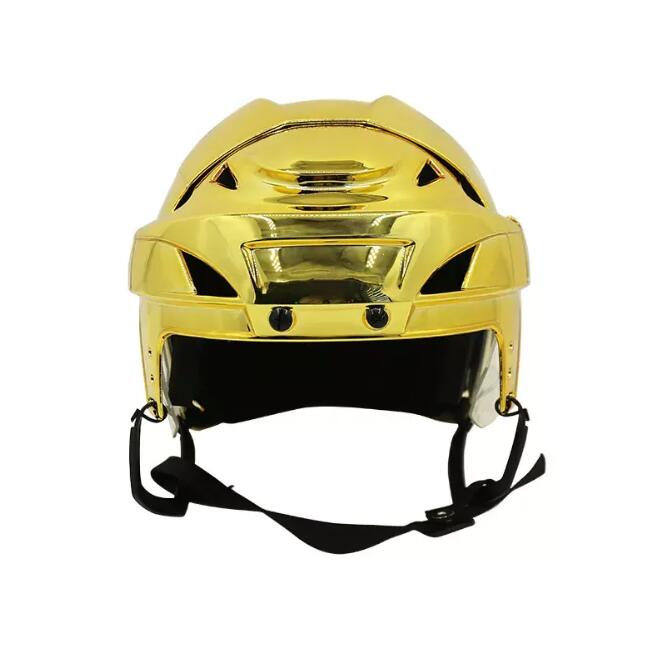Exploring the Foundations: Materials Used in the Construction of Hockey Player Helmets
2024-03-25
Hockey, a sport known for its fast-paced action and physical intensity, demands top-notch protective equipment to ensure player safety on the ice. Among the essential gear, the hockey player helmet stands as a primary defense against head injuries. Understanding the materials utilized in its construction sheds light on the innovation and engineering behind this critical piece of equipment.
1. Polycarbonate Shell:
The outer shell of a hockey player helmet is typically constructed from polycarbonate, a durable thermoplastic known for its high impact resistance. Polycarbonate shells provide a sturdy outer layer that disperses and absorbs impact forces, helping to minimize the risk of head injuries during collisions or falls on the ice.
2. Expanded Polypropylene (EPP) Foam:
The interior padding of hockey player helmets often consists of expanded polypropylene (EPP) foam. EPP foam is lightweight, flexible, and energy-absorbent, making it ideal for cushioning against impacts. This foam lining serves as a crucial component in dissipating and distributing the forces generated during collisions, thereby reducing the risk of concussions and traumatic brain injuries.
3. Expanded Polystyrene (EPS) Foam:
In addition to EPP foam, many hockey player helmets incorporate expanded polystyrene (EPS) foam layers for added impact protection. EPS foam is renowned for its ability to absorb energy and maintain its structural integrity under pressure, further enhancing the helmet's overall safety performance. The combination of EPS and EPP foams provides multi-layered protection against varying levels of impact severity.
4. Polyurethane (PU) Liner:
Some advanced hockey player helmets feature a polyurethane (PU) liner integrated into the padding system. PU liners offer enhanced comfort and fit customization, molding to the wearer's head shape over time for a personalized fit. This feature improves helmet stability and reduces movement during gameplay, optimizing both safety and performance.
5. Nylon Straps and Buckles:
The retention system of a hockey player helmet typically includes nylon chin straps and buckles. These components ensure a secure and adjustable fit, preventing the helmet from shifting or coming loose during play. Reinforced nylon straps and durable buckles withstand the rigors of competitive hockey, maintaining helmet integrity throughout the game.
6. Stainless Steel or Titanium Facemask:
Many hockey player helmets are equipped with a facemask made from stainless steel or titanium. These materials offer superior strength and impact resistance, protecting the player's face from high-speed pucks, sticks, or collisions with other players. Facemasks undergo rigorous testing to meet safety standards and ensure optimal protection without compromising visibility or ventilation.
Conclusion:
The construction of hockey player helmets involves a meticulous combination of materials designed to provide optimal protection, comfort, and performance for players on the ice. From polycarbonate shells to specialized foam padding and reinforced straps, each component plays a vital role in safeguarding against head injuries in the fast-paced world of hockey. As technology advances and safety standards evolve, the materials used in hockey player helmets continue to undergo refinement, setting new benchmarks for player safety and equipment innovation in the sport.



